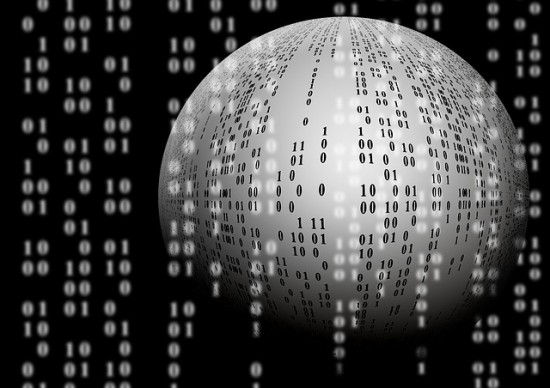 The Internet continues to make our lives easier with more developments coming on stream at a bewildering rate, and 2016 shows no signs of this trend abating.
The Internet continues to make our lives easier with more developments coming on stream at a bewildering rate, and 2016 shows no signs of this trend abating.
The advent of ‘wearable tech’, such as smart watches like the Apple Watch, the development of devices and objects being connected, as in the IoT (Internet of Things), and the huge rise of data storage and the development of technology to meet its demands, are just some areas of growth.
Unfortunately, so too are security threats – the more technology permeates out lives, the more risks there are so combating them is a key priority in 2016 and beyond.
Connectivity
While technical advances such as new versions of popular smartphones will inevitably grab headline news, the real developments are in connectivity and thus their ability to share and talk to other devices. For example, as part of the IoT, smartphones may run apps that enable people to ‘talk’ to their home heating system and control it remotely.
Making payments through a smartphone or smartwatch is already happening, and this trend is likely to increase as more payment methods are launched. There is stiff competition in the electronic payment arena, and PayPal, while leading today, may soon be superceded.
Wearable tech
This will usher in a new wave of interactivity for users such as integrating with the home and making payments on the go as discussed above.
Mobile payments
A concept major mobile players are committed to with Apple, Samsung and Android platforms available. Retailers working with it need to catch up – only one million nationwide in the UK could work with it as of the end of 2015.
Biometrics
Fingerprint and other biometric security methods are likely to become mainstream now they’re appearing on popular devices such as Apple’s iPhone.
AI (artificial intelligence)
Assistants such as Apple’s Siri are an example of AI, and Facebook are set to join in with ‘Facebook M’ which will be built into their ‘Messenger’ app.
Desktop computers declining
With increased mobile use and the ability of many laptops to offer enough power to perform the desktop function when required, the traditional desktop computer will decline in popularity further in 2016.
Internet of Things (IoT)
The way devices can interact with each other through network connectivity is becoming more mainstream. A good example is fitness tracking wearables, such as FitBit, that tracks the user’s day-to-day lifestyle such as diet, distance walked or run and steps taken before collating the information and showing it in various locations such as the user’s smartphone, tablet and laptop.
This technology and other like it has exciting potential – for example, a doctor could obtain a summary of the user’s lifestyle for the past year when discussing their health and well-being.
Big Data
While huge amounts of data are being produced, the constructive use of it has been lacking. With an estimated 25 billion devices now generating information, the priority is to accelerate the development of systems that can collate and make use of these vast amounts of data being produced.
Data management
With huge amounts of data being handled, organisations often have to revise and renew their data management capabilities. Software-derived storage is a growth sector as it enables organisations to increase their data storage facilities without necessarily having to invest in expensive hardware. Cloud computing will continue to rise for this reason and the need for expert help in installing data management facilities will continue to be vital for all types of business.
Machine learning
The ability of systems to collate and use information – such as search engines using algorithms to produce search results, email spam filters and optical character recognition (OCR) – are set to develop and be refined further in 2016.
Cyber threats
Security risks are on the rise, which is perhaps an inevitable consequence of the growth of technology. Publicising the risks and encouraging people to be more diligent and security-savvy will likely be more in evidence in 2016 as the government and industry commentators make an effort to advise of the risks.
Some manufacturers and organisations haven’t prioritised security, but that’s likely to change during 2016 as they investigate improved and more sophisticated security methods such as encryption and the hiring of highly experienced data security professionals.
Ramping up the training of company personnel is a priority as the more sophisticated security demands is causing a shortfall in qualified people.
The dire prediction though is that further high and low profile security breaches will likely occur in 2016.
It can be bewildering thinking about the huge growth in technology and its implications for all. The idea of being able to control functions of the home from a smartphone miles away isn’t so fanciful when one considers the technology already in place. But, the need for diligence is ever-more paramount with the attendant security risks.
Steve Wallington is the owner of Spiderweb IT Support, an IT support company that provides support packages and IT services to companies in and around Essex.
- 14 Things To Promote Your Book If You Are A Student Book Writer - October 26, 2024
- Why Website Security Is More Important Than You Think - May 12, 2021
- Building Team Collaboration And Boosting Productivity - August 20, 2020
- How to Acquire Backlinks in 2019 and Beyond - January 8, 2020
- Step By Step Guide To The Website Development Process - May 31, 2017
- Discover 8 Ways Blogging Contributes To Higher Search Rankings - May 31, 2017
- Why Making Money Online is Easier When You Know Foreign Languages? - April 20, 2017
- How to Attract Guest Bloggers [Updated] - March 9, 2017
